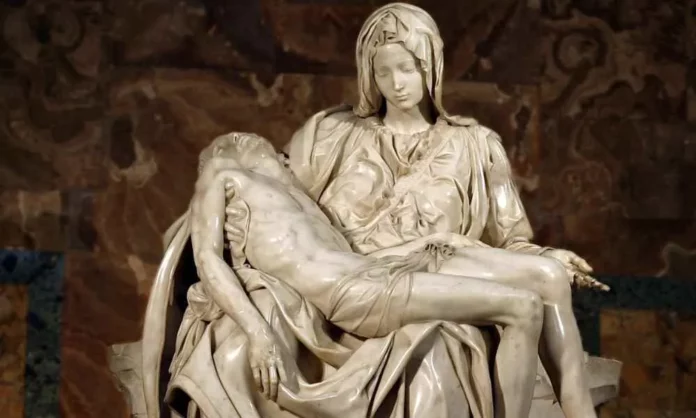Michelangelo’s Pietà stands as one of the most revered and mysterious masterpieces of Renaissance art. The sculpture, located in St. Peter’s Basilica in Vatican City, depicts the Virgin Mary cradling the lifeless body of Jesus Christ after the Crucifixion. Carved from a single slab of Carrara marble, this extraordinary work is filled with layers of hidden meanings, personal significance, and symbolism that continue to captivate art historians and visitors alike. The Pietà is not just a depiction of sorrow, but a testament to Michelangelo’s unrivaled skill, deep faith, and vision.
The Unique Symbolism and Iconography of the Pietà
Michelangelo infused the Pietà with deep symbolism, making it far more than a simple representation of the sorrowful scene. The sculpture speaks to themes of sacrifice, redemption, and maternal devotion, all tied to Christian iconography. From the folds in Mary’s robes to the lifeless body of Jesus, every detail contributes to a rich visual language, allowing viewers to experience both the sorrow of death and the hope of eternal life.
What makes the Pietà even more unique is that it’s the only piece of art Michelangelo ever signed. His signature appears boldly across the sash running along the Virgin Mary’s chest. This decision came after another artist was mistakenly credited with the creation, spurring Michelangelo to carve his name as a declaration of authorship. Interestingly, during a restoration in the 1970s, a second, more subtle signature in the form of the letter “M” was discovered hidden in Mary’s palm, adding another layer of mystery and intrigue to this already remarkable piece.
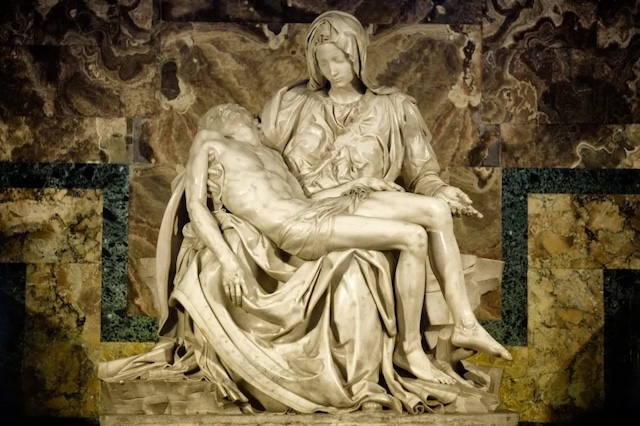
A Commission for Eternity: A Cardinal’s Request
The Pietà was commissioned by French Cardinal Jean de Billheres in the late 15th century to serve as a tomb monument. The Cardinal sought a masterpiece that would not only honor his legacy but also stand as a beacon of sacred craftsmanship. Michelangelo, then only 24 years old, took on the task and delivered a work that exceeded all expectations. His portrayal of the Virgin Mary’s calm composure and the peaceful expression of Christ captured the divine serenity the Cardinal desired.
One of the most astonishing aspects of the Pietà is that Michelangelo sculpted it from a single block of Carrara marble. Sourced from Italy’s famous Carrara quarries, the marble was prized for its pure white color and subtle blue-grey veining. Michelangelo, with unmatched precision and artistry, transformed this massive slab into a delicate and intricate work that evokes emotion and admiration from every angle.
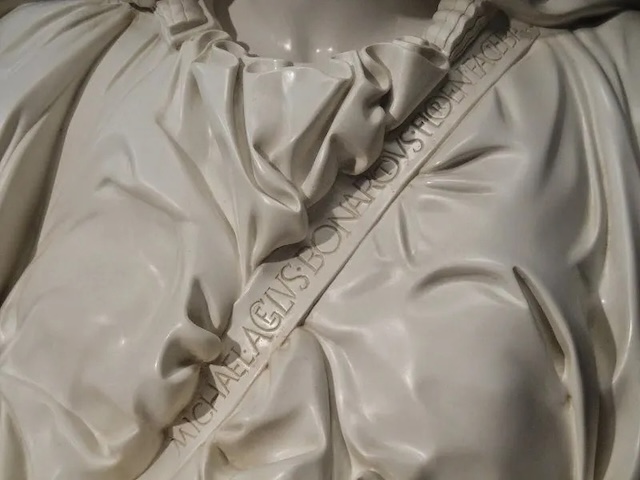
Hidden Meanings in Mary’s Tender Hold
At the heart of the Pietà is the powerful depiction of maternal love and comfort. Mary’s hands tenderly cradle the body of her son, symbolizing her role as both his mother and the Mother of God. One of her hands supports Jesus’s body, representing her eternal role in guiding and comforting the faithful. The other hand, facing upward, is open to those who seek solace, symbolizing Mary’s ability to uplift humanity in times of suffering. This moment of tenderness transcends sorrow, offering a message of hope and compassion to all who witness it.
One striking feature of the Pietà is the noticeable size difference between the Virgin Mary and Jesus. Mary’s body appears significantly larger, and this is not by accident. Michelangelo made this artistic choice to highlight the universal nature of motherhood. By making Mary larger than life, he conveys her ability to protect and comfort her son, despite the gravity of his death. Her oversized form is cloaked in rich folds of fabric, adding to her grandeur and allowing her to cradle Christ with maternal strength.
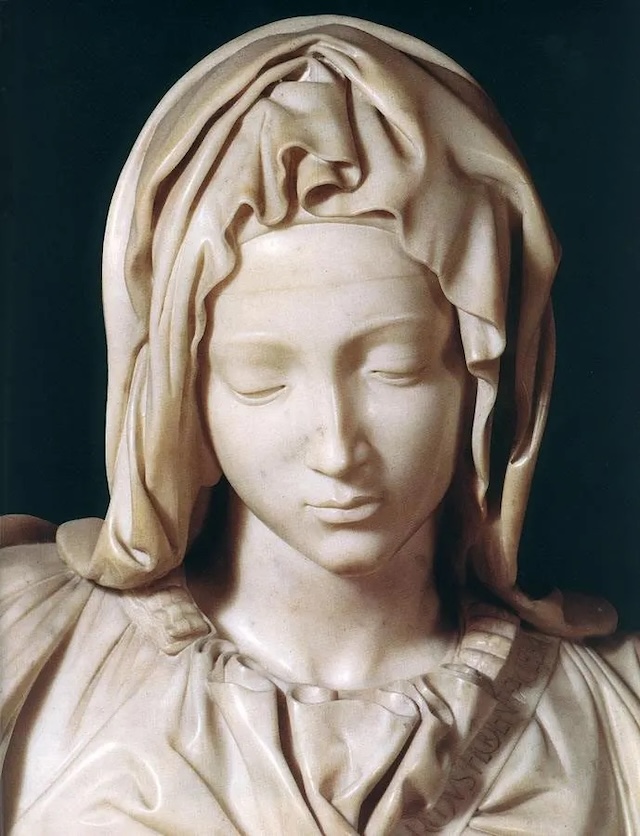
Breaking Tradition: A Youthful Virgin Mary
Another notable aspect of the Pietà is Michelangelo’s departure from traditional depictions of the Virgin Mary. Rather than portraying her as an older woman, reflective of her age at the time of Christ’s crucifixion, he presents her as a youthful figure. This deliberate choice symbolizes the timeless purity of Mary, emphasizing her eternal grace and divine beauty, untainted by time.
Beneath the delicate composition lies another layer of symbolism—Jesus’s left foot rests beside a severed branch. This small but significant detail hints at Jesus’s fulfillment of Old Testament prophecy. The branch is a reference to the line of David, from which the Messiah was prophesied to come. The severed element represents Christ’s sacrifice and death, tying together the themes of life, death, and resurrection.
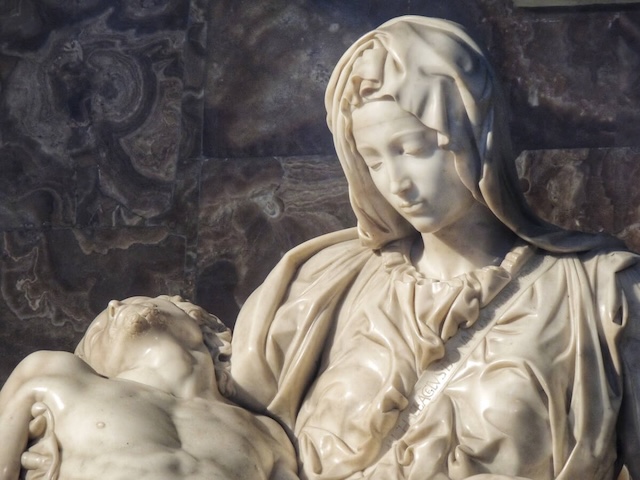
The Attack on the Pietà and Its Restoration
On May 21, 1972, Michelangelo’s Pietà suffered a brutal attack when a man named Laszlo Toth, wielding a hammer, damaged the nearly 500-year-old statue. Pieces of the Virgin Mary’s face and arm were shattered, shocking the world. After extensive restoration, the Pietà was placed behind bulletproof glass to protect it from future harm. This tragic event only reinforced the importance of preserving such masterpieces for future generations.
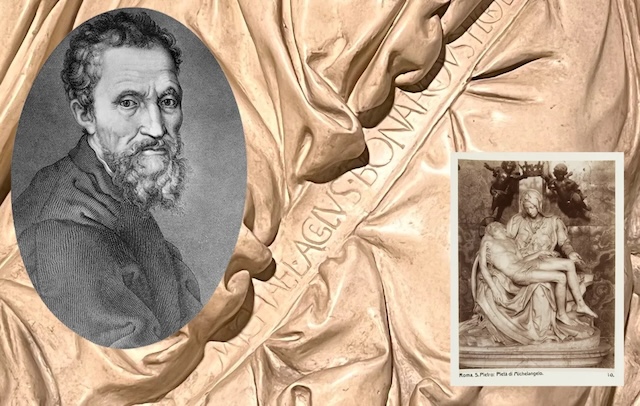
Conclusion
Michelangelo’s Pietà is more than a Renaissance masterpiece—it is a work that transcends time, offering layers of meaning, symbolism, and emotion. From its hidden signatures to its subtle iconography, the Pietà stands as a testament to Michelangelo’s genius and the enduring power of art. Its message of love, sacrifice, and eternal hope continues to resonate with all who behold it, making it one of the most treasured sculptures in the world.
